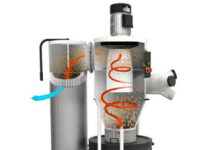كيفية الحصول على ترخيص التدفئة والتهوية وتكييف الهواء: دليل بسيط للمقاولين

يُعدّ تخصص التدفئة والتهوية وتكييف الهواء مجالاً رائعاً للدراسة. تعتمد المنازل والشركات على أنظمة التدفئة والتبريد يومياً، ما يعني وجود طلب دائم على الفنيين المهرة لضمان تشغيلها بسلاسة.
مع تقدم عمر المنازل، تحتاج أنظمة التدفئة والتهوية وتكييف الهواء إلى تحديثات. كما أن الظروف الجوية القاسية تزيد من الحاجة إلى الصيانة والإصلاح، مما يُبقي طلبات الخدمة مستمرة على مدار العام. سواء كنت مهتمًا بالأعمال السكنية أو التجارية الخفيفة، فإن فرص العمل في هذا المجال وفيرة.
ولكن قبل أن تتمكن من الاستفادة من هذه الفرص، ستحتاج إلى ترخيص.
هل تتساءل عن كيفية الحصول على رخصة تكييف وتدفئة؟ سيرشدك هذا الدليل خلال العملية. ستتعرف على أنواع التراخيص المختلفة، وكيف تختلف المتطلبات باختلاف الولاية أو المقاطعة، والخطوات اللازمة للحصول عليها.
أمامك مسار مهنيّ مثير. فلنبدأ.
لماذا الحصول على رخصة التدفئة والتهوية وتكييف الهواء؟

التدفئة والتهوية وتكييف الهواء من الصناعات النادرة التي تصمد أمام كل دورة اقتصادية تقريبًا. سيحتاج الناس دائمًا إلى التدفئة. سيحتاجون دائمًا إلى مكيف هواء حتى لو كانت درجة الحرارة ٩٥ درجة مئوية وتعطلت وحدتهم يوم السبت.
في الوقت الحالي، يُفاقم تغير المناخ هذا الطلب. فصول الصيف أكثر حرارة، وأحمال التبريد أثقل. في بعض مناطق الولايات المتحدة وكندا، لم يعد التكييف المركزي ترفًا، بل أصبح ضرورةً للبقاء.
حتى خلال فترات الركود الاقتصادي، تُبقي مكالمات الصيانة والإصلاح المقاولين مُلزمين بالمواعيد. تحتاج الأنظمة إلى صيانة، وتحتاج الفلاتر إلى تبديل، وتتعطل الضواغط. فنيو التدفئة والتهوية وتكييف الهواء المُرخصون لا ينتظرون أعمال البناء الجديدة، بل يظلون مشغولين لأن العمل ضروري.
وهذا ليس مجرد حكايات. من المتوقع أن تصل إيرادات الصناعة إلى $156.2 مليار بحلول نهاية عام 2025، مع نمو سنوي قدره 2.5% على مدى السنوات الخمس الماضية.
لماذا يجعلك الترخيص أكثر قدرة على المنافسة
امتلاكك ترخيصًا يميزك عن الشركات التي تُحمّلك في شاحنة. يُثبت ذلك لعملائك أنك مؤهل وقانوني. بالنسبة للوظائف السكنية، يُعدّ هذا عامل ثقة. أما بالنسبة للعروض التجارية، فهو أمرٌ غير قابل للتفاوض.
يمكن لخبراء التدفئة والتهوية وتكييف الهواء المرخصين استخراج التصاريح، والموافقة على التركيبات المتوافقة مع المعايير، وتقديم عروض أسعار للعقود الحكومية أو العقود واسعة النطاق. أنت مسؤول، ويمكنك إثبات ذلك.
كما يفتح لك آفاقًا أوسع. بمجرد حصولك على الترخيص، يمكنك توظيف متدربين. يمكنك التعاقد من الباطن مع شركات البناء. يمكنك أيضًا زيادة عروض عقود الخدمات لأن عملك مدعوم بالقانون، وليس مجرد كلام شفهي.
إذا كنتَ في سوقٍ تنافسي، فإن هذا الترخيص يمنحك مصداقيةً، فهو يُمثِّل وسيلةً فعالةً لتحديد أسعار أعمالك وتحديد سعرها.
الحقائق القانونية والسلامة
بدون الترخيص الصحيح، فإنك تخاطر بالتعرض لمشاكل التأمين، وأوامر وقف العمل، وفي أسوأ السيناريوهات، اتهامات جنائية.
أنظمة التدفئة والتهوية وتكييف الهواء مرتبطة بكل شيء: الكهرباء والسباكة والأعمال الإنشائية وغيرها. إذا لم تكن مرخصًا، فسيُلاحظ المفتشون ذلك. وكذلك العملاء. وكذلك... شركة تأمين المسؤولية عندما يحدث خطأ ما.
الترخيص يحميك و الأشخاص الذين تعمل معهم.
من أحد شركائنا — 7 خطوات أساسية لإطلاق مشروعك في مجال التدفئة والتهوية وتكييف الهواء
فهم تراخيص التدفئة والتهوية وتكييف الهواء

يسأل بعض العملاء عن ترخيصك قبل الاستفسار عن الأسعار. هذه إشارة جيدة على أهميته بالنسبة لهم، وينبغي أن يكون مهمًا بالنسبة لك أيضًا.
يُحدد ترخيص التدفئة والتهوية وتكييف الهواء نوع العمل الذي يُمكنك القيام به، ويوضح كيفية تنمية أعمالك والعقود التي تُؤهلك للحصول عليها.
أنواع تراخيص التدفئة والتهوية وتكييف الهواء الشائعة
تتغير متطلبات الترخيص حسب الموقع، ولكن هذه هي الفئات الأكثر شيوعًا:
- رخصة فني تكييف وتدفئة:للأعمال اليدوية كالتركيب والإصلاح والصيانة. غالبًا ما تكون مرتبطة بمؤهلات صاحب العمل إذا لم تكن صاحب العمل.
- رخصة مقاول التدفئة والتهوية وتكييف الهواء:لإدارة شركتك الخاصة. مطلوب لاستخراج التصاريح، أو توظيف الموظفين، أو إدارة مشاريع كاملة.
- رخصة التبريد:مطلوب في بعض الولايات أو المقاطعات للعمل على أنظمة الدرجة التجارية أو وحدات المشي.
- رخصة الصفائح المعدنية:مطلوب في الولايات القضائية التي تنظم تصنيع مجاري الهواء.
إذا كان عملك يتضمن المبردات، فستحتاج إلى الشهادة الفيدرالية بغض النظر عن المكان الذي تعمل فيه.
كيف تختلف أدوار المقاول والفني
يعمل الفنيون بموجب ترخيص شركة أخرى، ولا يتحملون مسؤولية المشروع ولا يتقدمون بطلبات التصاريح بأنفسهم.
يتحمل المقاولون مسؤولية العمل. يشمل ذلك تسجيل الشركة، واستيفاء متطلبات التأمين والضمان، واجتياز امتحان مهني. في معظم المناطق، ستحتاج أيضًا إلى عنوان فعلي وخبرة ميدانية لا تقل عن ثلاث سنوات.
إذا كنت تشرف بالفعل على طاقم أو تقوم بتسعير الوظائف بنفسك، فإن السعي للحصول على حالة المقاول هو الخطوة المنطقية التالية.
ثلاث شهادات تستحق الحصول عليها
بالإضافة إلى الترخيص، يُمكن لفنيي التدفئة والتهوية وتكييف الهواء الحصول على شهادات معتمدة. ومن الأمثلة القيّمة:
1. المادة 608 من وكالة حماية البيئة (الولايات المتحدة فقط)
هذا مطلوب عند التعامل مع المبردات. تنقسم الشهادة إلى أربع فئات: الأجهزة الصغيرة، وأنظمة الضغط العالي، وأنظمة الضغط المنخفض، والشاملة. يغطي الخيار الشامل الفئات الثلاث.
2. شهادة NATE
مُعترف بها في جميع أنحاء أمريكا الشمالية، وهذا يُثبت خضوعك لاختبارات عملية. الشهادات متاحة للمُثبّتين وفنيي الصيانة والمناصب العليا.
3. شهادة R-410A
يغطي هذا مادة تبريد محددة استُبدل بها غاز R-22. تستخدم معظم الوحدات السكنية الآن غاز R-410A. تتضمنه العديد من برامج التدريب، ولكن من المهم التأكد من ذلك.
شهادات إضافية
تعمل الشهادات على تعزيز قدرتك التنافسية وتسمح لك بتولي أنواع مختلفة من الوظائف.
تشمل الشهادات الأخرى التي قد ترغب في متابعتها ما يلي:
مقالة ذات صلة — دليل تسعير أنظمة التدفئة والتهوية وتكييف الهواء: كيفية تسعير أعمال أنظمة التدفئة والتهوية وتكييف الهواء
متطلبات الحصول على ترخيص التدفئة والتهوية وتكييف الهواء

قبل التقدم بطلب للحصول على ترخيص التدفئة والتهوية وتكييف الهواء، تأكد من استيفائك للمتطلبات الدنيا في المكان الذي تعيش وتعمل فيه.
لكل ولاية أو مقاطعة قواعدها الخاصة. بعض المناطق لا تطبق نظام ترخيص على مستوى الولاية، لكن معظمها يشترط الخبرة وإثبات التدريب.
دعونا نكسر كل ذلك.
الحد الأدنى من التعليم والتدريب
تتطلب معظم برامج الترخيص الحصول على شهادة الثانوية العامة أو شهادة الثانوية العامة.
من هناك، لديك عادةً خياران:
- إكمال برنامج مدرسة تجارية أو كلية تقنية
- احصل على خبرة ميدانية تحت إشراف مقاول HVAC مرخص
تستغرق برامج التدريب ما بين ستة إلى اثني عشر شهرًا. وتشمل مكونات النظام، وسلامة المبردات، وأساسيات الكهرباء. كما تتضمن العديد من البرامج التحضير لامتحان وكالة حماية البيئة الأمريكية EPA 608.
إذا دخلتَ هذا المجال من خلال خبرة عملية، فإن معظم هيئات الترخيص تطلب ما لا يقل عن 3000 ساعة عمل. وتشترط بعض الولايات خبرة موثقة في مجال التدفئة والتهوية وتكييف الهواء لمدة تتراوح بين سنتين وخمس سنوات.
المتطلبات حسب الولاية أو المقاطعة
تُقيّم هيئات الترخيص كلاً من التعليم والخبرة. لكن القواعد تتغير كثيرًا حسب مكان العمل.
تشترط بعض الولايات مزيجًا من التعليم والخبرة العملية. كما يشترط العديد منها اجتياز امتحان.
من السمات المشتركة بين الولايات والمقاطعات مستوى الترخيص. كلما ارتفع المستوى، زادت قدرتك على تولي المزيد من الوظائف. للانتقال إلى المستوى التالي، قد تحتاج إلى آلاف ساعات إضافية من الخبرة أو شهادات إضافية.
في حين أن بعض المناطق لديها قواعد صارمة، فإن مناطق أخرى تترك الأمر للسلطات المحلية.
إذا كنت تعمل في ولاية لا يوجد بها نظام على مستوى الولاية، فتحقق من مقاطعتك أو مدينتك. إلينوي وبنسلفانيا ونيويورك أمثلة على الولايات التي تُطبق فيها القواعد المحلية.
الجدول الزمني للحصول على الترخيص
تستغرق عملية الترخيص الكاملة ما بين سنتين وخمس سنوات. ويعتمد هذا النطاق على مسارك التدريبي، واللوائح المحلية، وما إذا كنت تتقدم بطلبك كفني أو مقاول.
يُكمل بعض المتقدمين دراستهم وتدريبهم المهني في أقل من ثلاث سنوات. إذا كنت تعمل بدوام كامل دون تعليم رسمي، فقد تحتاج إلى وقت أطول لتلبية متطلبات الخبرة.
التعليم المستمر والتجديد
بعد حصولك على الترخيص، تحقق من دورة التجديد في منطقتك. تنتهي صلاحية العديد من التراخيص كل عامين وتتطلب تعليمًا مستمرًا موثقًا. غالبًا ما تركز الدورات على تحديثات الأكواد البرمجية أو طرق التثبيت الجديدة.
قد يكون التعليم المستمر شرطًا للحفاظ على صلاحية رخصتك. كما يضمن لك مواكبة تغييرات النظام والمتطلبات القانونية.
من أحد شركائنا — إتقان المهنة: التدريب على أنظمة التدفئة والتهوية وتكييف الهواء
الترخيص حسب المنطقة: نظرة عامة على الولايات المتحدة وكندا
كما ذكرنا سابقًا، يعتمد ترخيص أنظمة التدفئة والتهوية وتكييف الهواء على الموقع.
تُصدر بعض الولايات والمقاطعات تراخيص على مستوى المهنة، بينما تُدير ولايات أخرى العملية محليًا. قبل التقديم، تأكد من القواعد المُطبقة في مكان عملك.
متطلبات الترخيص في الولايات المتحدة
تُنظّم معظم الولايات الأمريكية أعمال التدفئة والتهوية وتكييف الهواء من خلال هيئة ترخيص. تختلف أنواع التراخيص ومتطلبات الامتحانات باختلاف الولاية. بعض الولايات تُرخّص المقاولين فقط، بينما تُلزم ولايات أخرى الفنيين بالتأهل بشكل منفصل.
دعونا نلقي نظرة سريعة على بعض الأمثلة.
كيفية الحصول على رخصة التدفئة والتهوية وتكييف الهواء في كاليفورنيا
في كاليفورنيا، تحتاج إلى ترخيص مقاول لأي مشروع HVAC يتجاوز $500.
ال مجلس ترخيص المقاولين الحكومي يُصدر الترخيص. للتأهل للحصول على رخصة C-20، يجب عليك أن:
- لدي أربع سنوات من الخبرة في مجال التدفئة والتهوية وتكييف الهواء، منها سنة واحدة في العمل
- اجتياز امتحانات قانون التجارة والأعمال
- أكمل فحص الخلفية
- التحقق من تاريخ العمل من خلال مؤهل مرخص
- احصل على تأمين المسؤولية واحصل على سند المقاول
يسمح لك هذا الترخيص بتثبيت وإصلاح وصيانة أنظمة التدفئة والتهوية وتكييف الهواء في المباني السكنية أو التجارية.
كيفية الحصول على رخصة التدفئة والتهوية وتكييف الهواء في ولاية كارولينا الشمالية
ترخص ولاية كارولينا الشمالية لمحترفي التدفئة والتهوية وتكييف الهواء من خلال مجلس الدولة لفحص المقاولين في مجال السباكة والتدفئة والرشاشات لمكافحة الحرائق. التراخيص تندرج تحت ثلاث فئات للنظام:
- المجموعة 1:التدفئة القائمة على الماء
- المجموعة 2:أنظمة الهواء القسري التي تزيد عن 15 طنًا
- المجموعة 3:أنظمة الهواء القسري التي يقل وزنها عن 15 طنًا
هناك طريقتان للتأهل:
- رخصة فني: يتطلب 3000 ساعة من الخبرة في مجال التدفئة والتهوية وتكييف الهواء في فئة مجموعتك ونتيجة النجاح في الامتحان.
- رخصة المقاول:يتطلب عامين من العمل بدوام كامل في فئة مجموعتك. قد يكون نصف المبلغ من خلال تدريب فني معتمد. يجب عليك أيضًا اجتياز امتحان الترخيص.
الولايات التي لا تملك ترخيصًا على مستوى الولاية لأنظمة التدفئة والتهوية وتكييف الهواء
هذه بعض الولايات التي لا تصدر تراخيص على مستوى الولاية:
- إلينوي
- نيويورك
- بنسلفانيا
- ميسوري
تُعنى المدن أو المقاطعات بإصدار التراخيص. تواصل مع إدارة البناء المحلية لمعرفة الإجراءات المطلوبة.
متطلبات الترخيص الكندية
في كندا، تخضع تراخيص أنظمة التدفئة والتهوية وتكييف الهواء لتنظيم كل مقاطعة. وتتبع معظمها معايير الختم الأحمر لميكانيكا التبريد وتكييف الهواء، مع مراعاة المتطلبات المحلية في الأعلى.
وهنا ما تحتاج إلى معرفته.
شهادة الختم الأحمر
ال برنامج الختم الأحمر تضع معايير اعتماد وطنية للحرف الماهرة. للحصول على اعتماد الختم الأحمر، يجب عليك:
- إكمال التدريب الإقليمي
- تلبية متطلبات ساعات العمل وساعات التدريب
- اجتياز امتحان الختم الأحمر بين المحافظات
يتيح اعتماد الختم الأحمر للحرفيين المؤهلين العمل في جميع المقاطعات والأقاليم المشاركة.
كيفية الحصول على رخصة التدفئة والتهوية وتكييف الهواء في أونتاريو
في أونتاريو، تتم إدارة ترخيص أنظمة التدفئة والتهوية وتكييف الهواء بواسطة منظمتين:
كيفية الحصول على رخصة التدفئة والتهوية وتكييف الهواء في ألبرتا
في ألبرتا، يحتاج محترفو التدفئة والتهوية وتكييف الهواء إلى:
- إكمال المدرسة الثانوية أو ما يعادلها
- فترة تدريب تتراوح من ثلاث إلى خمس سنوات، أو خمس سنوات من الخبرة الموثقة في الدورات الصناعية
الشهادة إلزامية في ألبرتا. بعد اجتيازك الامتحان الإقليمي، يمكنك التقدم بطلب للحصول على ختم أحمر إذا استوفيت جميع متطلبات التجارة الوطنية.
مقالة ذات صلة — أدوات التدفئة والتهوية وتكييف الهواء الضرورية: قائمة للمبتدئين
كيفية التقدم بطلب للحصول على ترخيص التدفئة والتهوية وتكييف الهواء (خطوة بخطوة)

قد يبدو التقدم بطلب للحصول على رخصة تكييف وتدفئة معقدًا في البداية. ولكن بمجرد أن تعرف ماذا ما عليك فعله هو فقط إكمال الخطوات واحدة تلو الأخرى.
دعونا نلقي نظرة عن كثب على هذه العملية.
الخطوة 1: حدد نوع الترخيص المناسب
ابدأ باختيار الترخيص الذي يتناسب مع دورك.
تقوم معظم السلطات القضائية بفصل التراخيص حسب النطاق:
- رخصة فني:مطلوب العمل تحت مقاول مرخص.
- رخصة المقاول:مطلوب منه تقديم عروض العمل، واستخراج التصاريح، والعمل كعمل تجاري.
تُصدر بعض الولايات أو المقاطعات تراخيص متخصصة في التبريد أو الغاز. تأكد من هيئة التراخيص المحلية قبل التقديم.
الخطوة 2: إكمال تدريب أو تدريب مهني في مجال التدفئة والتهوية وتكييف الهواء
للتأهل، من المرجح أنك ستحتاج إلى تدريب رسمي، أو خبرة عمل تحت الإشراف، أو كليهما.
معظم المتقدمين إما:
- إنهاء برنامج التدفئة والتهوية وتكييف الهواء في مدرسة تجارية أو كلية فنية
- أكمل التدريب المهني المسجل تحت إشراف متخصص مرخص
- دمج ساعات العمل الميدانية مع الدورات الدراسية الموثقة
الخطوة 3: توثيق ساعات عملك
تتطلب هيئات الترخيص إثباتًا قاطعًا على الخبرة العملية. يجب الإشراف على هذه الساعات وتوثيقها.
تتضمن المتطلبات النموذجية ما يلي:
- من 3000 إلى 8000 ساعة مسجلة لرخص المستوى الفني
- أربع سنوات من العمل بدوام كامل للحصول على تراخيص المقاولين
بعض البرامج تسمح باستبدال جزئي بتدريب صفي معتمد. تأكد دائمًا من عدد الساعات المطلوبة للتسجيل.
الخطوة 4: اجتياز امتحان الترخيص
سيحتاج معظم المتقدمين إلى اجتياز امتحان واحد على الأقل. بعض تراخيص المقاولين تتطلب امتحانين:
- اختبار فني يركز على أنظمة التدفئة والتهوية وتكييف الهواء والسلامة
- امتحان منفصل في قانون الأعمال أو اللوائح التجارية
توقع تحديد موعد اختبارك من خلال جهة معتمدة. تتراوح درجات النجاح الدنيا عادةً بين 70% و75%.
قبل امتحانك، راجع قائمة المواضيع المنشورة. قد تتوفر اختبارات تجريبية أو دورات تحضيرية من خلال مقدمي التدريب المحليين. راجعها جيدًا لتكوين فكرة عن المواضيع التي سيتم اختبارك فيها.
الخطوة 5: تقديم الطلب ودفع الرسوم المطلوبة
بمجرد اجتياز الاختبار وجمع مستنداتك، يمكنك التقديم.
تطلب معظم التطبيقات:
- إثبات الهوية والإقامة
- التحقق من التدريب والخبرة
- نتائج الاختبار أو وثائق الشهادة
- شهادات التأمين والسندات (للمقاولين)
- دفع رسوم الطلب والترخيص
الخطوة 6: الحفاظ على رخصتك وتجديدها
بعد الموافقة، قم بتتبع تاريخ انتهاء صلاحية الترخيص الخاص بك وأي متطلبات للتجديد.
عادةً ما تُجرى دورات التجديد كل سنتين أو ثلاث سنوات. وتشترط العديد من الولايات والمقاطعات ما يلي:
- ساعات التعليم المستمر
- سجلات التأمين والسندات المحدثة
- تجديد شهادات المبردات أو الغاز
قد يؤدي عدم الالتزام بالموعد النهائي إلى تأخير الموافقة على المشروع أو استيفاء شروط التقديم. يُنصح بتخصيص تذكير في تقويمك.
نصائح لبناء مهنة كمحترف مرخص في مجال التدفئة والتهوية وتكييف الهواء
الآن تعرف كيفية الحصول على رخصة تكييف وتدفئة. إليك أربع نصائح لبناء مسيرة مهنية ناجحة في هذا المجال:
- ابحث عن نوع الترخيص الذي تحتاجه الآن والشهادات التي قد ترغب في الحصول عليها خلال السنوات القليلة القادمة.
- حدد هدفًا لمدة 30 يومًا وآخر لمدة 6 أشهر لساعات الترخيص أو التدريب. دوّنهما.
- أعدّ قائمة بثلاثة منافسين محليين. راقب كيفية ترويجهم لخدماتهم. فكّر فيما ستفعله بشكل مختلف.
- تعرف على برنامج تقدير تكاليف التدفئة والتهوية وتكييف الهواء وإصدار الفواتير الذي سيساعدك على توفير الوقت، والظهور بمظهر احترافي، والحصول على أموالك بشكل أسرع.













